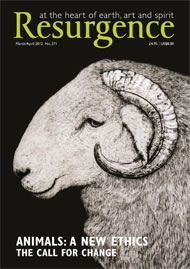In her book Do Fish Feel Pain? Victoria Braithwaite asks three fundamental questions: “Can fish experience pain?”, “Do humans cause them to suffer?” and “Does it matter?”
Every year 60 billion fish lose their lives to human exploitation. Most are dragged out of the water by commercial fishermen, in the process of which they experience the effects of sudden pressure change, followed by slow suffocation on the decks of trawlers. Others are caught by anglers, on barbed hooks that pierce their throats, whilst others are experimented on as they ‘replace’ mammals in an attempt to achieve the three Rs in research laboratories. Many are kept in captivity in aquariums where their basic needs may not be met. For me, the sheer scale of the exploitation makes this book a fundamental contribution to the science of animal welfare.
Braithwaite is a scientist and she approaches these questions in an entirely scientific and logical manner. She is Professor of Fisheries and Biology at Penn State University, USA and a Visiting Professor of Biology at the University of Bergen, Norway. She graduated from Oxford University with a PhD in animal behaviour and, working first at the University of Glasgow and then at the University of Edinburgh, she developed a research programme investigating fish cognition and behaviour. In 2006 she was awarded the Fisheries Society of the British Isles Medal in recognition of her contribution to fish biology.
After undertaking scientific research herself on the brains and nervous systems of trout and after reviewing similar research conducted by other scientists, Braithwaite concludes that fish have the mental capacity to feel pain and that there is sufficient evidence to put fish alongside birds and mammals. She says: “I see no logical reason why we should not extend to fish the same welfare considerations that we currently extend to birds and mammals.”
She demonstrates that fish have a nervous system, which not only results in nociceptive (reflex) responses to painful stimuli, but also creates conscious awareness of pain.
Nociception is the unconscious recognition by the nervous system that damage is occurring somewhere, but pain is the emotional sensation that whatever is damaged is hurting. She proves that it is pain, not just nociception, that fish experience.
She explains that, although modern-day fish have not evolved around their brains a limbic system and a neocortex, which are associated with the higher brain activity of mammals, similar structures to those contained in these brain parts have evolved in the forebrain of the fish. Fish have in their forebrains a hippocampus and an amygdala, which in mammals reside in the limbic system. Thus fish are capable of experiencing the emotion of feeling pain and are therefore capable of suffering.
Not only do fish have the capacity to experience suffering, but they also demonstrate an ability to use long-term memory and to solve simple logic problems. They can navigate and learn mazes and work collaboratively, as is demonstrated by the eel and the grouper, who hunt together using each other’s different specialisms.
Braithwaite asks where to draw the line with regard to animal welfare concerns, and she examines other people’s work on invertebrates such cephalopods, including octopus and squid, and crustacea, including crabs, lobsters, prawns and barnacles. This work concludes that they too experience more than nociception, but that there is insufficient evidence to draw the line to include them in the circle of moral concern. However, their position serves to strengthen the case for fish, which Braithwaite concludes should be grouped on the same side as other vertebrates.
Finally, the question of ethics is addressed, and although Braithwaite does not take a purist view suggesting that humans should not fish, she does state the case for higher standards of welfare in the treatment of fish. She concludes that fish do feel pain, that humans do cause them to suffer, and that it does matter. But she cautions against rushing into ill-conceived legislation or knee-jerk responses to her findings, suggesting that much more research needs to be done in the area of fish welfare standards.
Overall this is a fascinating book, skilfully written to appeal to both the scientist and the layperson, and a very important contribution to animal welfare science.







